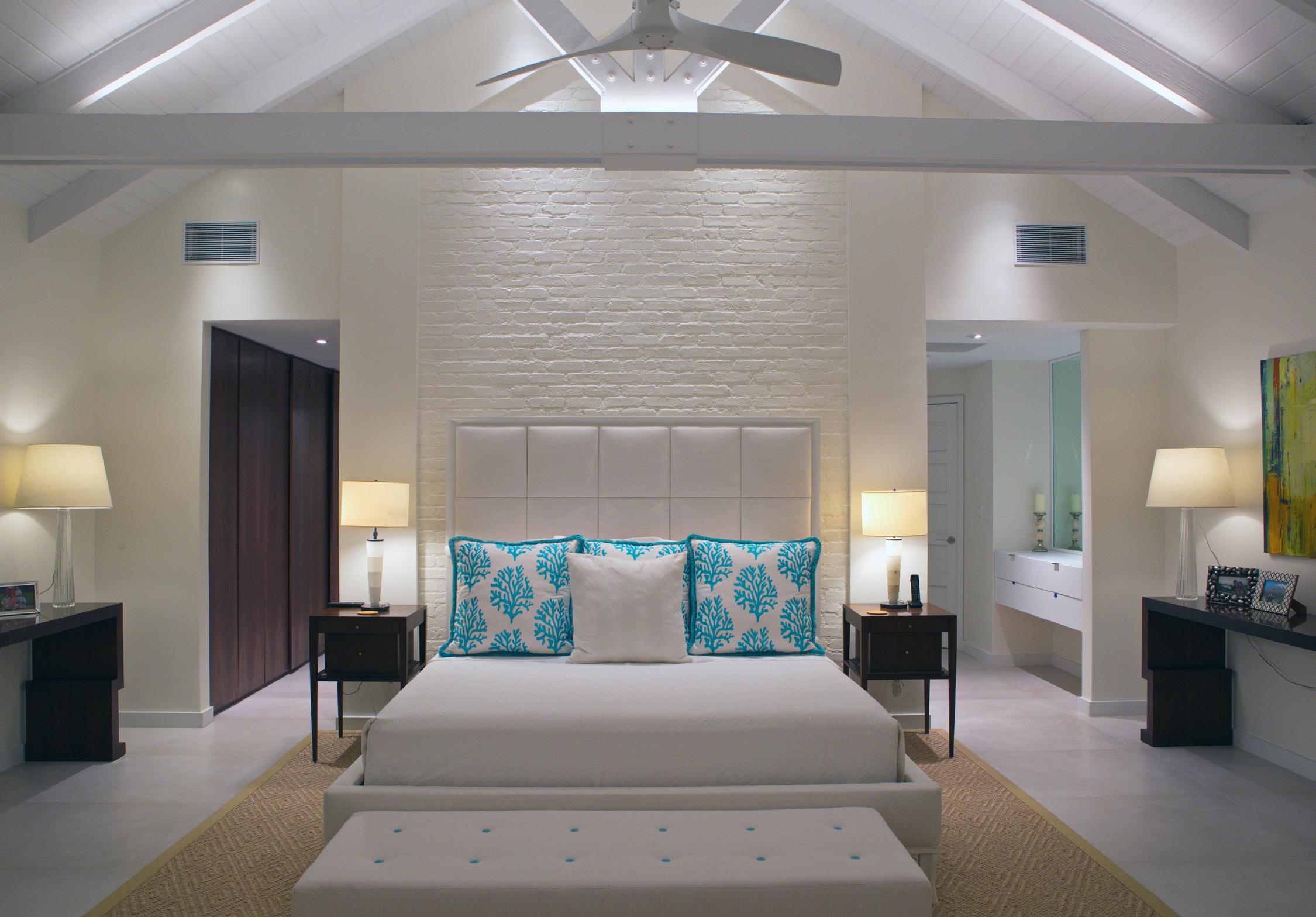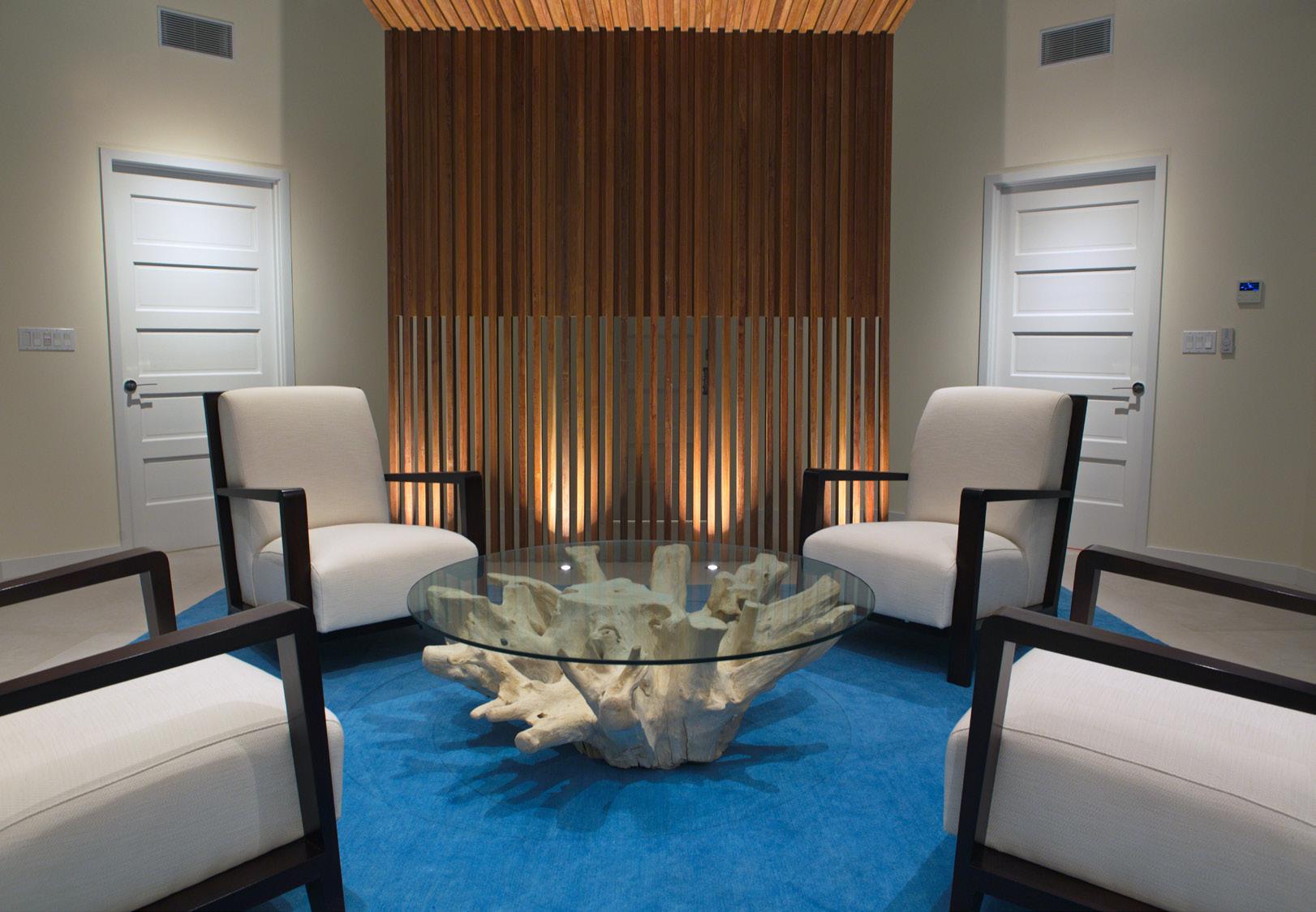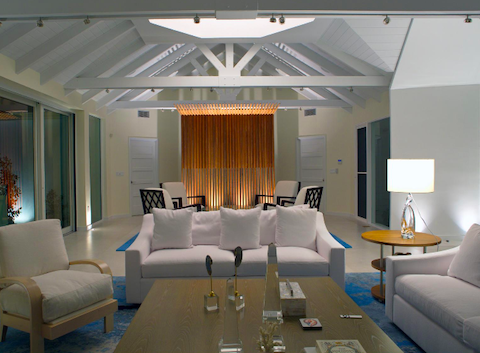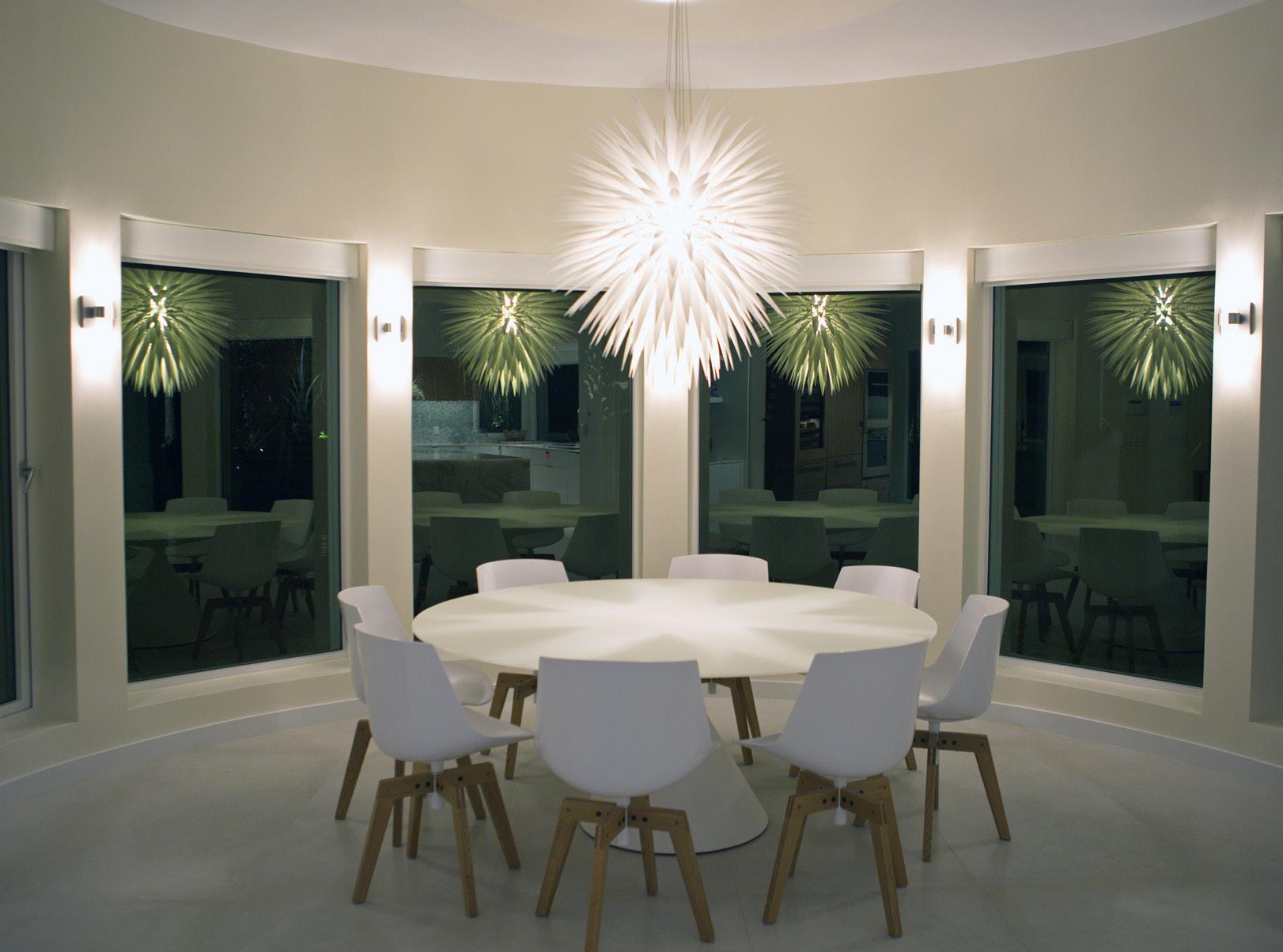Even before stay-at-home orders were a mandate, there has always been an upper eschelon of clientele whose residences – whether primary or vacation homes – command the square footage of a resort or commercial property. One of the outcomes of the pandemic has been an increased emphasis on maximizing one’s home and property to serve as a self-contained compound of sorts for a variety of family activities.
James Solecki, a leading lighting designer who has operated a boutique lighting design business in his native Canada for 20 years before his expertise was tapped to handle resort projects in the Turks & Caicos Islands, has been straddling the line between hospitality/commercial work and luxury residences for years. He is also on the board of directors for the International Landscape Lighting Institute.
Designing lighting plans for large residential resort properties ― especially with features such as wall-to-ceiling windows or unusually tall ceilings ― takes a more comprehensive skill set than the average interior designer might possess when it comes to not only providing adequate lighting for the space after sundown, but then strategically illuminating architectural features and objets d’art.
“Whether I’m located in Muskoka, Ontario, or here in the Turks and Caicos, the challenges are similar,” Solecki explains. “Lighting large volume spaces while maintaining a warm, welcoming, and subtle appearance requires a strong understanding of technical specifications and a lot of creativity. I have relied heavily on my experience in stage and live event lighting to help direct me in my residential lighting solutions.”
Solecki says his motto is, “See the effect, not the source” when describing his design style to clients and architects. “Nowhere is this more important than in grand scale, voluminous residential interiors,” he nots. “In order to accomplish a quiet, glare-free interior, you need to pay close attention to the photometrics of any given luminaire while also ensuring that accessory glare control components – such as Hex-cell louvres and shrouds or ‘snoots’ – are available.”
When it comes to photometrics, Solecki emphasizes the need to check that the manufacturers have done their homework and can provide all of the optical performance data required to ensure that the surfaces and objects being highlighted will receive not only the right amount of light, but that aspects such as beam shape are appropriate and appealing.
In the average home, glare control is not nearly as critical as when shooting light across a large room or space. “Nothing ruins a lovely lighting composition more than glare,” Solecki states. “It’s imperative that beam direction is considered from all angles in a room before finalizing fixture placement. Even the best quality directional lighting fixtures, fitted with glare control accessories, can be very annoying when viewed directly from a sitting area. It is my opinion that if there aren’t glare control accessories for the projected light source I want to use, then that luminaire drops to the bottom of my list. Glare is our enemy, and it needs to be eliminated.”
It is because of these lighting nuances that Solecki is a strong advocate for architectural lighting professionals being involved in any major renovation or new construction project. “Not employing one is essentially the same as leaving your lighting design to chance. While interior designers, decorators, and the like often come up with interesting and novel light fixtures, they are rarely familiar with all of the technical requirements of a great lighting composition,” he explains. “Similarly, while the electrician may seem to have a handle on fixture selection, installation, techniques and controls, few have the depth of knowledge about the essence of light that makes a space or place remarkable. A good lighting designer will combine their technical expertise with their creative flair to come up with a system that truly enhances the project.”

As an architectural lighting consultant, Solecki sees his role as an arbiter. “I work directly for my client while working alongside the architect, engineer, interior designer, and electrician,” he says. “Learning on each project from everyone on the design team only strengthens my abilities for the next project, allowing me to build on their experience and deliver something truly remarkable. Another one of my sayings is, ‘People don’t get great lighting ― until they get it.’ ” Collaborating with interior designers is the best approach, according to Solecki. “Typically, I will handle the design/layout and specification of all permanently installed luminaires such as recessed, linear, step, in-floor, monorail, and all exterior fixtures,” he recounts. “I then ask the interior designer for their specifications of the occasional and decorative fixtures. I review those specifications and will advise them if I find discrepancies with the overall design concept. Things like CCT, unshielded lamps, and incompatible drivers or power sources can create some hurdles, but we can usually work with the interior designers to find alternatives or make corrections.”
Sometimes those collaborations have hit some snags. “Being in a coastal environment is one of our greatest challenges. Often the decorative fixtures that are suggested are simply not appropriate for open-air or outdoor locations,” he remarks. “I will always try to find an appropriate architectural lighting solution, but I don’t always win… until such a time as that lovely wicker pendant over the patio table fails, usually in a few short months. Then the clients tend to revert to my suggestions.”
Solecki believes there are good residential opportunities for architectural lighting designers in most markets. “Not a week goes by where I don’t have to pause and educate someone about what it is I do, and why,” he says. “The residential market needs more of us. Your challenge will be found in convincing the clients, architects, and designers that you can bring value to the project. The only way to do that, in my experience, is to educate, educate, educate. While building your network, focus on the clients first,” he advises. “Most of our clients have been involved in multiple projects over the years and they are most apt to listen, learn, and approve. Once you have the ear of the client, it is much easier to communicate with the rest of the design team and get them on board.
 “Glare is our enemy, and it needs to be eliminated.”
“Glare is our enemy, and it needs to be eliminated.”
Just as in all of North America, business in the Turks and Caicos are different than before the COVID-19 pandemic. For example, in a giant blow to tourism, Turks & Caicos had to close its borders to visitors for four months.
“I don’t expect to see too much renovation work from the major resort/condo operators as they try to recover,” Solecki admits. “Our construction industry is still moving forward, however. The villa building boom of the last few years continues. There are many fully committed projects moving forward as well as strong interest from new buyers and developers. Vacation property resales continue to be strong, which is encouraging for more renovation and upgrade projects. I am confident that we will weather this storm and come out on the other side stronger and more popular than ever. It’s important to note that the TCI is uniquely positioned in the Caribbean with its proximity to major urban markets, its long-standing reputation as a safe and ‘high end’ destination, and a haven for international investors.”

This article originally appeared in the August 2020 issue of designing lighting.




 “Glare is our enemy, and it needs to be eliminated.”
“Glare is our enemy, and it needs to be eliminated.”